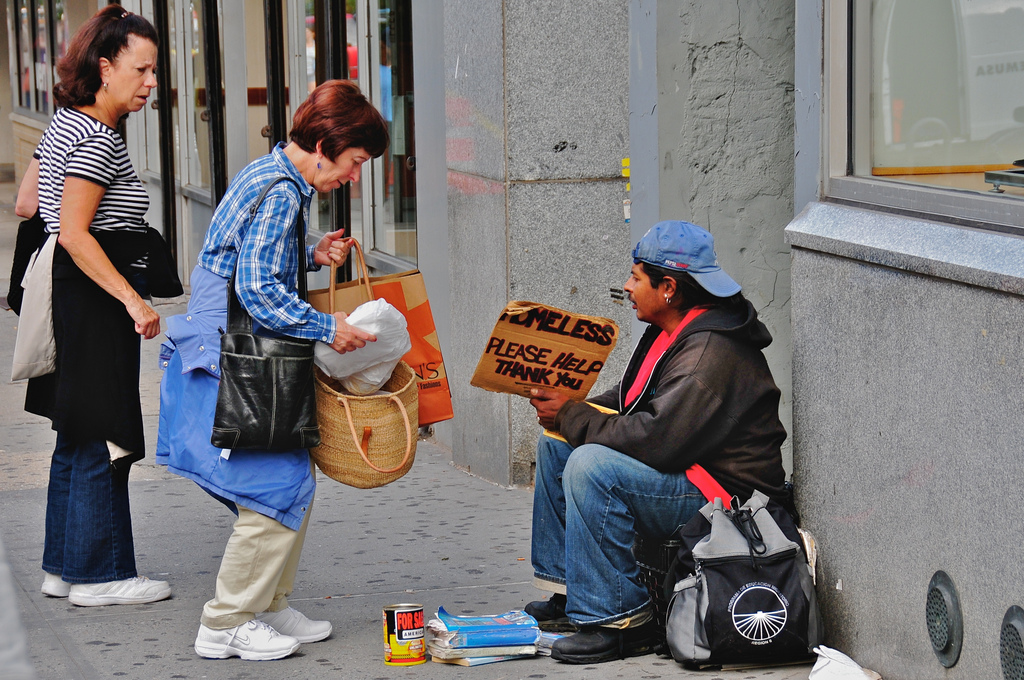Single men and women comprise more than half the city’s homeless population.
The city’s annual one-day count found 3,696 unaccompanied homeless adults in the District.
Meanwhile, other singles, who are struggling to pay their rent or who are doubled up with friends or relatives are at risk of ending up on the streets or in shelters.
Two pilot programs will take a look at whether emergency rental assistance and rapid re-housing initiatives that have shown promise in getting homeless families back on their feet could also help homeless singles.
Homeless advocates see the development as a hopeful sign.
“At Miriam’s Kitchen we had people who would come in for case management, meals or other services who would tell us they felt they could get out of homelessness if they had programs like this,” said Kurt Runge, director of advocacy at the Foggy Bottom program.
The two pilot programs, the Emergency Rental Assistance (ERAP) and the Rapid Re-Housing Program for unaccompanied homeless adults in the District, were approved by the City Council as part of the 2014 budget in May. Service providers advocated for funding for the pilot programs after homeless men and women expressed an interest in having versions of local and national housing assistance programs available to them.
Over the summer, plans for the pilots advanced. In July, the city’s Interagency Council on Homelessness (ICH) held a public roundtable on the pilot programs. The ICH’s committee on strategic planning suggested a group of stakeholders in the pilot programs compile suggestions for the Department of Human Services (DHS), which will design and implement the programs.
“We wanted to include the input of service providers who do these programs because they’ve worked with them and know things they may want to change about them when offering them to singles,” said Runge.
The ICH group was expected to meet with DHS staff again to offer detailed guidance for the pilot programs. DHS will also likely request public input before the program design is finalized. Funding for the programs becomes available October 1, though the programs may not launch until later this calendar year.
One challenge is designing targeting for the programs that accurately identifies those who are most in need.
“We have an opportunity to help people who really need services but haven’t been eligible for them,” Runge said. “They won’t serve everyone who needs it, but it will help those who don’t have resources.”
ERAP currently serves families, disabled adults and individuals older than 65. It offers funds for rent if a household meeting the program’s eligibility requirements is facing eviction. A family or individual may also apply for assistance with a security deposit and first month’s rent on a new home.
Under a new ERAP pilot for unaccompanied adults, ICH has recommended spending $500,000 to provide assistance to single individuals. Like the existing ERAP, the pilot program for singles aims to prevent homelessness among those who are at risk by offering rental assistance to individuals facing eviction and by funding security deposits and first month’s rent for those who are currently homeless.
The ICH group has suggested that eligibility for the ERAP pilot’s prevention efforts be determined by using a targeting tool used in New York that evaluates the likelihood that an individual facing eviction will become homeless if he or she does not receive services. Eligibility for funds for security deposits and first month’s rent could be based on the Service Prioritization Decision Assistance Tool.
“We’re trying to find the individuals facing evictions who have limited resources,” Runge said about the importance of targeting. “Some people have more resources and are able to find their way out of being homeless. We want to figure out who most needs services in order to prevent them from becoming homeless.”
The Rapid Re-Housing Program looks to efficiently transfer individuals out of shelters into permanent housing. According to the National Alliance to End Homelessness, most homeless households have lived in independent, permanent housing in the past and often maintain stable housing after Rapid Re-Housing placements with limited services.
The pilot program for singles will provide a subsidy to make rent more affordable for individuals who are currently homeless. Participants will receive assistance in finding safe and affordable housing, employment placement and case management. The ICH proposal has individuals paying move-in-costs and 40 percent of their income toward rent during their participation in the program.
While the program aims to provide multiple services, it will likely only serve about 50 individuals during its pilot stage due to limited funding.
“We have the challenge of not having a lot of funding. The Rapid Re-Housing Program won’t be able to serve that many people. It will only scratch the surface of meeting the needs,” Runge said.
Since both programs are pilots, Runge said evaluations of their effectiveness will be a crucial part of the process over the next year.
“By having ways to evaluate we will get an idea of things we can do to make the programs better if they aren’t entirely successful or ways to expand them and help more people if they are,” Runge said.








